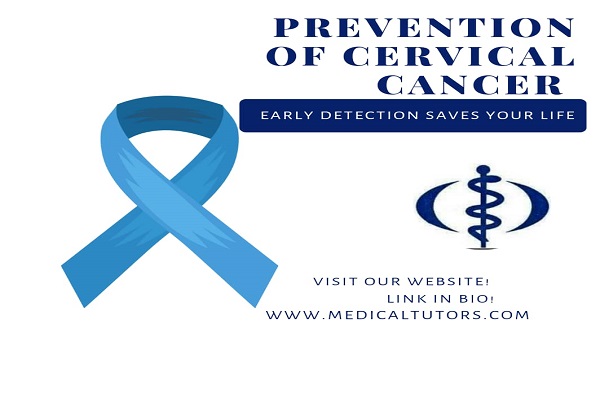 Wash your hands regularly and wear a face mask.
Learn more
Wash your hands regularly and wear a face mask.
Learn more

For a long time in Nigeria, the prevalence death rate of cervical cancer among women has been alarming. This may be due to the fear of the word cancer or the inadequate health sector in this part of the world.
Cervical cancer is one of the preventable cancers in the world today, yet the lack of accurate information about its prevention has caused so many deaths among women in Nigeria.
In preventing cervical cancer, there are two forms of prevention: Primary and Secondary form of cervical cancer prevention.
PRIMARY FORM OF PREVENTION
This form of prevention involves protection against risk factors and enhancing the protective factors. The risk factors are anything that increases the chance of developing cervical cancer among women.
Human Papilloma Virus Infection (HPV)
Cervical cancer is almost always caused by human papillomavirus (HPV) infection that is spread through sexual contact. Most cases of cervical cancer are linked to an infection with certain types of Human Papilloma Virus (HPV). HPV can be spread through unprotected sex, so using a condom can reduce the risk of developing the infection.
However, the virus is not just passed on through penetrative sex: it can be transmitted during any type of sexual contact. This includes any skin-to-skin contact between genitals; oral, vaginal, or anal sex; and using sex toys.
The risk of HPV infection is higher in women who become sexually active before age 18 and in women who have had 6 or more sexual partners; although women who have had only 1 sexual partner can also develop it, especially if the partner carries human papillomavirus.
The preventive measure that can be taken against HPV is the HPV Vaccine. Vaccines that protect against HPV infection greatly reduce the risk of cervical cancer. These vaccines do not protect women who are already infected with HPV. These vaccines have been shown to prevent infection with the types of HPV that cause most cervical cancers. Getting the HPV vaccine while pregnant, does not have any harmful effect on the pregnancy. Although the HPV vaccine can significantly reduce the risk of cervical cancer, it does not guarantee that the recipient will not develop the condition. The primary target group in most of the countries recommending HPV vaccination is young girls, aged 9-14 years.
Also, practicing safe sex through the use of condoms; avoiding multiple sex partners; avoiding sexual contact with persons with genital warts or the likes can also help avoid the spread of HPV.
Giving Birth to Many Children
Among women who are in their reproductive stages, those who have had 7 or more full-term pregnancies do have an increased risk of cervical cancer. Therefore, the best way to prevent cervical cancer among active reproductive mothers includes family planning and a reduction in the number of children.
Using Oral Contraceptives for a Long Time
Women who have used oral contraceptives for 5 to 9 years also have a risk of cervical cancer, which is 3 times greater than that of women who have never used oral contraceptives. The risk is 4 times greater after 10 or more years of use. Therefore, women should avoid the use of oral contraceptives for a long time. Intrauterine contraceptive device (long term) or condom usage (short term) during sex is advisable.
Smoking Cigarettes
Women can reduce their chances of getting cervical cancer by not smoking. People who smoke are less able to get rid of the HPV infection from the body, which can develop into cancer. Among women who are infected with HPV, those who either smoke cigarettes or breathe in secondhand smoke have an increased risk of cervical cancer. So, it is recommended that women should stop both active and passive smoking.
SECONDARY FORM OF PREVENTION
The secondary form of prevention includes the use of screening methods for early detection and treatment.
The following screening methods may be used to screen for cervical cancer:
HPV Test: This test is done on a sample of cells removed from the woman’s cervix; the same sample used for the Pap test (see below). This sample is tested for the strains of HPV most commonly linked to cervical cancer. HPV testing may be done by itself or combined with a Pap test. This test may also be done on a sample of cells collected from a woman’s vagina, which she can collect herself.
Pap Test: The Pap test has been the most common test for early changes in cells that can lead to cervical cancer. This test is also called a Pap smear. A Pap test involves gathering a sample of cells from the cervix. It is often done at the same time as a bimanual pelvic exam as part of a gynecologic checkup. A Pap test may be combined with an HPV test.
Visual Inspection with Acetic Acid (VIA): VIA is a screening test that can be done with a few tools and the naked eye. During VIA, a dilution of white vinegar is applied to the cervix. The health care provider then looks for abnormalities on the cervix, which will turn white when exposed to vinegar. This screening test is very useful in places where access to medical care is limited.
ACTION TO PREVENT CERVICAL CANCER
When a pap test is positive and a cone biopsy of the cervix shows early changes in a grown woman who has had all her children, it is advisable to carry out a total hysterectomy to prevent the onset of full-blown cervical cancer.